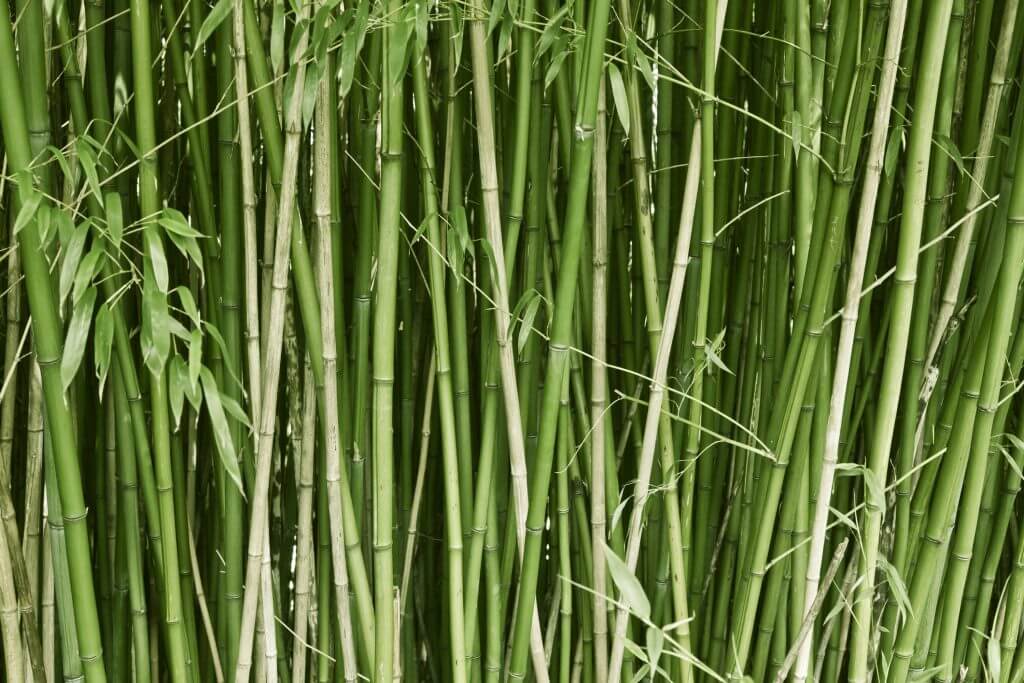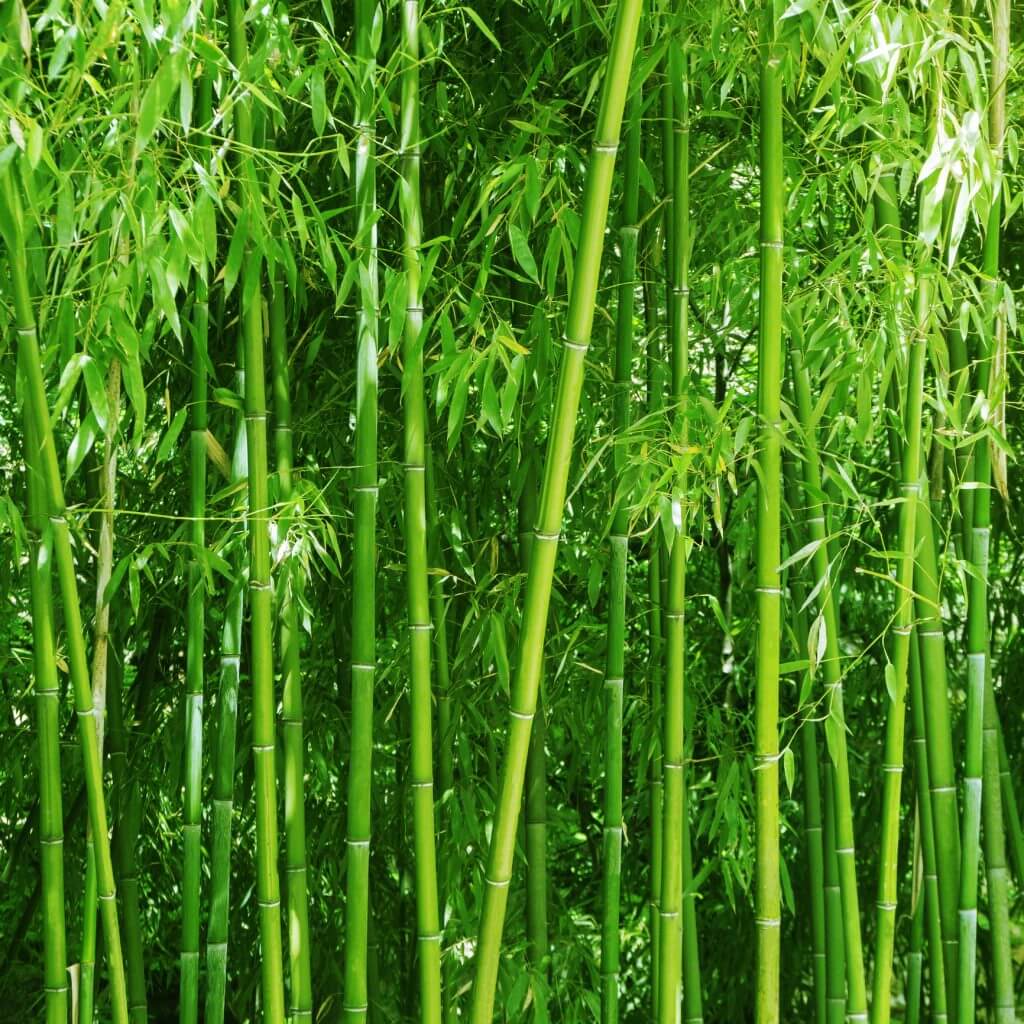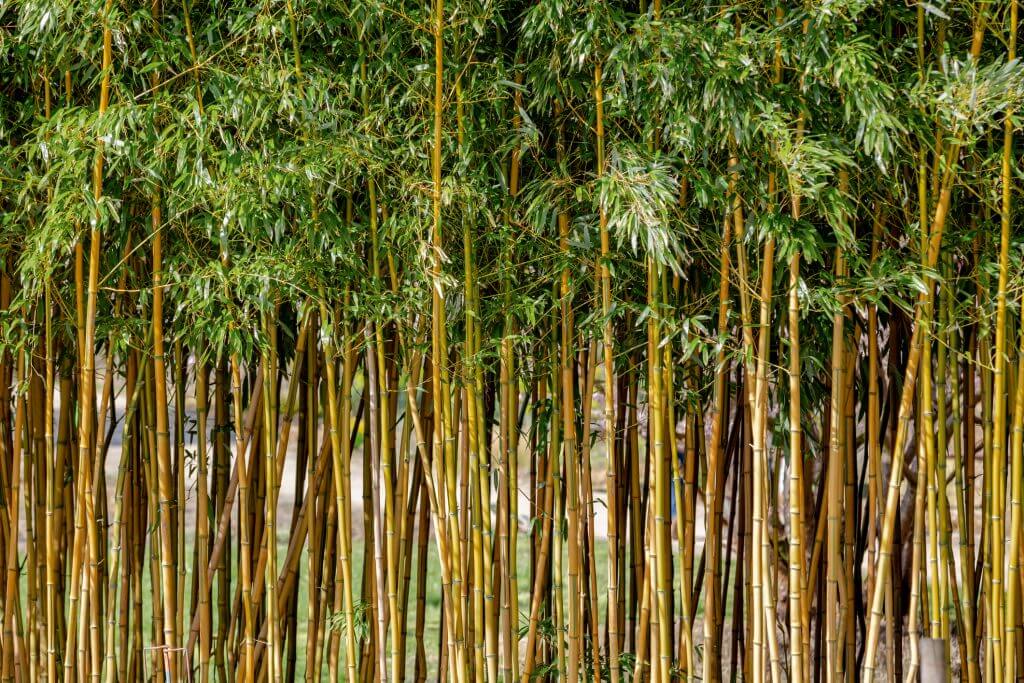Bamboo adds a fresh look to your landscape and garden designs. Its crisp green colour and outstanding height make it the best hedge for your landscape. It can cover unattractive views in your garden as well. You can find bamboo anywhere because it is one of the fastest-growing plants out there.
You may get surprised at how fast bamboo grows. Like other grasses, it becomes invasive with only a short period. It might even take over a huge part of your garden without you noticing. Without prior knowledge about growing bamboo, it will be a rough journey for you. Here are the important things that you should know for your bamboo to thrive.

What is Bamboo?
Bamboo is a member of a grass family known as Poaceae. It grows easily and is one of the fastest-growing wood plants. Compared to trees and the grass you see on your lawn, bamboos continue to grow when you cut them.
Its resilient root system reproduces visible bamboo poles after you trim them. Its poles can grow up to 24 inches or more in a day. The rapid regrowth of bamboo makes the production of traditional hardwood forest easier.
You can grow bamboo in any climate as it is an adaptive plant. Bamboo comes in different varieties as well. But the two most used in home landscapes are running bamboos and clumping bamboos. Most gardeners avoid the use of running bamboos as it spreads twice as much as clumping bamboos.
There are ways to contain the brisk growth of running bamboo. But do not put it as a priority unless its aggressive growth you can put to good use. It is still best to use clumping bamboos for your next landscape project.


What are Clumping Bamboos?
Clumping Bamboo is sympodial and has a non-invasive rhizome structure known as pachymorph. Its unique characteristics let it stay closer to its point of origin and do not spread so rapidly. It is easier to control its growth compared to running bamboo. It grows pointed outward in a circular formation at a stable pace of 2 to 12 inches per year.
The growth of its canopy is also slow. It only gains a couple of feet and width every year. Its height range at maturity is approximately 10 to 20 feet. But it can reach up to 50 feet in tropical and subtropical areas.
There are a lot of types of clumping bamboo. You will have a lot of options to choose from when doing landscape. Here are the three usual grown types of clumping bamboos by gardeners:
- Fargesia– This is the type of bamboo used to block wind and provide security in the form of a natural fence. Its full and bushy appearance makes it thick enough to provide privacy and assurance to your landscape. It can grow up to 15 feet tall given the best conditions. You will need well-drained soil, a balanced fertiliser, and partial sunlight to let it grow in its best condition.
- Thamnocalamus– Compared to Fargesia, this type is more sun tolerant and can also grow up to 15 feet tall. Gardeners use this as windbreakers and natural screens in sunnier areas. Some of its species can grow up to 25 feet with smaller leaves contrary to other types of clumping bamboos.
- Chusquea– It is the most sun tolerant type of clumping bamboo. Its origin is Chile and nearby parts of South America. This type of clumping bamboo can grow past 20 feet if left untrimmed. It can also sustain cold weather when necessary which contributes to its flexibility and makes it easier to cultivate.
- Borinda– While the rest of the types of clumping bamboos are sun resistant, Borinda is the opposite. It is less sun-resistant and very tolerant of cold weather which makes it suitable for the Mediterranean climate. You will need to put it under a shade during the day to keep it from growing. It will also need well-drained soil and a low humidity space for it to thrive.
Those are the basic characteristics and types of clumping bamboo. You can easily tell why gardeners prefer this overrunning bamboo. Make sure to choose the type of clumping bamboo that fits your garden. Consider the weather in your place and the space available before planting.


How to Select a Variety?
It is important to know which variety of clumping bamboo will best thrive in your area. Although bamboo is an adaptive plant, there are a lot of factors that can affect its growth. Here are the things that you need to consider when selecting a variety of clumping bamboo for cultivation:
Temperature
Most of the clumping bamboo’s varieties can adapt to climate changes. But it can only thrive at its best when exposed to favorable conditions. Some of the varieties can tolerate high exposure to sunlight but few thrive better with cold temperatures.
Before planting, consider the temperature in your area. If you are living in tropical regions, you can grow Thamnocalamus and Chusquea. They are the most sun tolerant amongst other varieties. However, avoid exposing them to temperatures higher than 38 degrees. They do not do well in these high-temperature conditions.
If you are living in a place with colder weather, you can plant Borinda. It is the most tolerant of cold among the varieties. It is best to select a variety that can tolerate the temperature well in your area.
Purpose
A lot of people think that bamboos are there in the garden for aesthetic reasons but that is not the case. When you plant bamboo, it should have a purpose rather than just for beautification. It is because every variety has specific functions and putting them randomly in your garden will not serve its purpose.
If you want to provide a natural fence to your garden, you cannot plant Thamnocalamus because of its small leaves and thin appearance. You can choose Fargesia instead. Its thick bushy appearance is the best to provide privacy and assurance to your landscape.
Not knowing your purpose of planting a bamboo can only result in problems and future challenges. You may even end up uprooting the bamboo because it is becoming a nuisance rather than serving its purpose. Ask yourself why you need to plant bamboo in your landscape. After that, choose which variety will best fit your purpose and include it in your plant list.
Height and Width
If you are lucky enough to have a spacious garden, then you do not have to worry about the height and width. But if you have limited space for your landscape, these two factors are important.
Each type of clumping bamboo grows in different lengths. If you have limited space in your garden, choose a variety that grows relatively low compared to other varieties. This can help you anticipate the growth of the bamboo and can help you prepare ahead. You would not want to trim your bamboo from time to time as it can be a hassle in the long run.
Desired Look
The aesthetic aspect of bamboo is one of the reasons why gardeners like to include it in their landscape. When you are about to create bamboo hedges, you should choose a variety that has a thick and bushy appearance. If you want to create natural screens that are pleasing to the eyes, go for a variety that has small leaves. Its alternating thin leaves in large numbers will look like blinders.
Think of your desired look for your landscape first then choose which variety best fits your plan. Remember to consider the size of your area when choosing a variety as each one grows in different lengths.
Remember these tips in selecting a bamboo variety for your landscape. These are helpful especially for beginners in gardening and landscaping. You can get a lot of ideas from these tips on how to make your clumping bamboo thrive.


How to Grow Clumping Bamboo?
Growing a clumping bamboo is a bit complicated compared to growing a plant. There are a lot of factors to consider to provide the most favorable condition for the bamboo to thrive. Here are the steps on how to plant a clumping bamboo to serve as your guide.
Choose your desired variety to plant.
As discussed above, consider the different factors before planting. Know which variety suits the temperature in your area and which one can fit in your garden when it grows. Determining the needs of your plant is critical to your success in growing it.
Water requirements of your chosen variety.
Bamboos grow best when you water them regularly. Some varieties even require more watering than usual. It will be easier if you plant your bamboo near irrigation or a stream where water is already available.
Planting it that way will make the maintenance easier. But remember that bamboos do not grow well in saturated areas where they become soggy. The ideal place is an area with high drainage soil with frequent watering available.
Sunlight and space requirements of your chosen variety.
Clumping bamboos grow well in partial shades but large clumping bamboos require full sun to attain their full size. When it comes to space, most varieties of bamboo will not require a square meter of ground for growth. The usual area for planting bamboo culms measures 15cm or more in diameter and an area of 2 or more meters for maturity.
Prepare the soil
Till the ground and put as many organic materials as you can. It will be difficult to improve the soil condition while the bamboo is growing. Which is why it is important to prepare your soil before planting.
Add organic materials such as composted steer manure or peat moss to a depth of 30 cm to 40 cm. After putting the organic materials, dig about an inch deeper than the pot where the bamboo is originally planted. Make sure to remove pebbles and stones if there are any. Water the hole that you dig thoroughly to loosen the soil and make it easier for planting.
Slowly put the bamboo plant in the soil.
Be careful when transferring the bamboo from the pot to the hole because you might damage soft new shoots or culms. Straighten any culms that point in different directions to avoid breaking soft shoots. Press down firmly and slowly on the bamboo to make sure it touches the bottom of the hole.
Do not worry if the plant touches a few inches below the ground level. It will self-adjust automatically as it grows. Putting it in a deeper position will also give it additional protection in its first summer or winter. That is when the weather is in its extreme conditions.
Make a berm or a mound of soil.
The berm will help direct the water to stay around the plant. Make sure that its size is 2 to 3 inches higher than the pot where it is originally planted. Fill the berm with mulch to conserve the moisture of the soil and to improve its fertility. Here are some of the materials that you can add to create a mulch:
- small bark chips
- grass cuttings
- Straw
- Sawdust
- dry leaves
- Hay
- shredded bark
Water the bamboo one last time.
Before leaving the newly planted bamboo, water it for the last time. Its purpose is to merge different soil layers and connect them with the roots of the plant. But do not water too much as it is not good to keep bamboo too wet. Keep the ground damp enough so it can be properly absorbed by the soil.
Those are the simple steps on how to plant and grow a clumping bamboo. Make sure to follow each step carefully to avoid unnecessary problems while growing the plant.


How to Take Care of Your Clumping Bamboo?
Aftercare is important when planting bamboo. It is a crucial part that contributes to your success in growing a bamboo plant. Here are the best practices on how to take good care of your clumping bamboo:
- Provide enough sunlight. If you planted it in an area with too much sunlight, put a cloth near it to lessen the brightness and heat,
- Trim the shoots to remove unhealthy growths and maintain the pleasing appearance of your bamboo.
- Water your bamboo according to the season to keep it hydrated. Keep a weekly schedule of watering the plant especially during summer.
- Occasionally add mulch to the soil around your bamboo to help the roots from sudden changes in weather. It can also help in soaking up the water for the plants during dry seasons.
- Visit it from time to time and check its growth. It is best to check the plant regularly to see if there are pests around or if it is doing okay. Do not wait until it is too late to solve small problems that you could have prevented from the start.
Cultivating bamboo is not easy. It takes a lot of patience and determination to successfully grow one bamboo plant. But if you follow the best practices in cultivating and taking care of your clumping bamboo, it will surely thrive. Remember all the tips and information mentioned above and use it as a guide when planting your bamboo.
